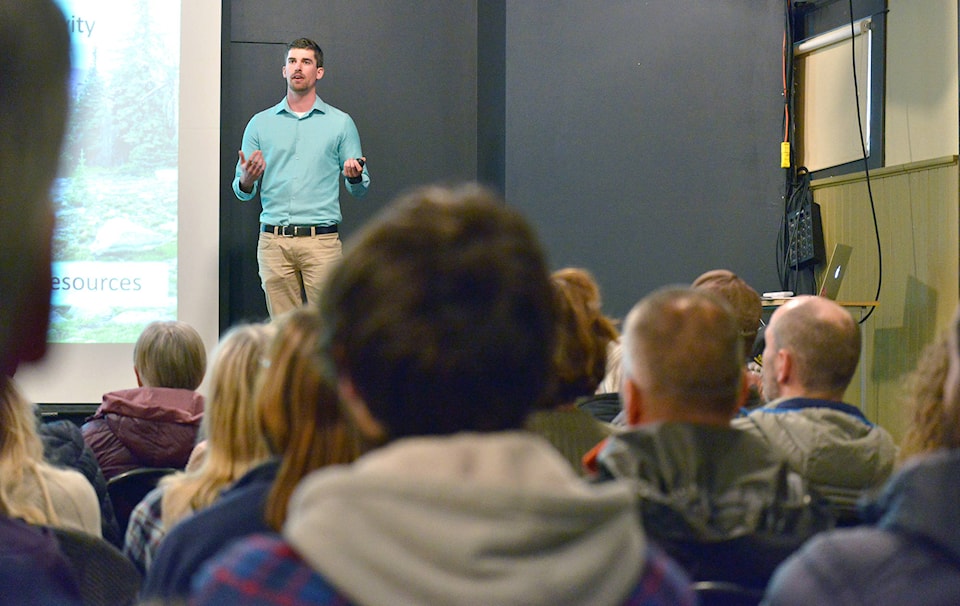Biologists concerned for the wellbeing of grizzly bears in the Elk Valley presented their findings to a full house at The Arts Station in Fernie on April 5.
Grizzly bear biologist Clayton Lamb led an hour-and-a-half discussion on the issues the species is currently facing in a presentation titled, “Grizzly Bears: Running Out of Room”.
What affects grizzly bears? According to Lamb, it’s a change in landscape. This forces them to move. An increase in logging in the Grand Forks area from 1984 to 2014 forced many bears to relocate and for those that stayed, the construction of more roads increased the bears’ exposure to risk.
A large majority of grizzly bear deaths in the Elk Valley are non-hunter related. This means that the animals are killed either by a motor vehicle or destroyed after becoming a problem animal.
Lamb explained that the numbers for hunter related kills were near-perfect, as every bear shot by a hunter must be reported. He further explained that there were three to four times more non-hunter related kills than there were reported to the province.
The treatment of animals around highways also matters. Road kill, or something as little as striking an animal, must be reported to the province and dealt with properly, otherwise the problem of non-hunter related kills will increase.
Roadkill is seen as an attractive food source by bears. Leaving animals on the side of the road will only attract more wildlife to these areas and increase their exposure to risk. Additionally, once a grizzly bear has found an attractive food source, biologists found that they often return many times in an attempt to find more.
To help remediate this problem, download the Roadwatch smartphone app and report and sightings of wildlife. Wildsight has reminded motorists to not use their phones while driving.
Currently, there approximately 400 bears in the Elk Valley, from Kananaskis to the Flathead. Biologists determined this over a ten-year study.
After extensive research, they found that the average age for bears killed in the Elk Valley was much lower than in other areas of B.C. Biologists know this because of the reports submitted by hunters to the province. Hunters were not encountering any older bears. Additionally, they discovered that for every 40 bears that come into the Elk Valley and die within a decade, four would be born in the valley and move out.
Because of this, many younger bears are moving in to backfill this high mortality.
Lamb and his team of biologists took this a step further and partnered with Parks Canada to see how large the problem actually was. How far are bears traveling to reach the Elk Valley?
By combining data, they found that bears were traveling from as far away as Kananaskis to where they eventually settled near Elkford.
One was recently destroyed after entering Elkford and the other was hit by a car.
“So it was basically exactly what we thought was happening here,” said Lamb.
“Bears were getting locked in on some sort of food resource.
“We can think of that, with strong evidence to support that there is some sort of an ecological trap dynamic, and also that it was still functioning as of last year.”
The Elk Valley is seen as a hot spot for non-hunter related kills in B.C. Lamb explained that attractive natural (berries) and supplementary (garbage) food sources were the main reason for this.
He suggested that Elkford, a hot spot for grizzly bear sightings, should assess and remove all fruit trees from residential areas.
This would reduce the risk of a bear becoming a problem animal.
To Lamb, this is a “no-brainer”.
